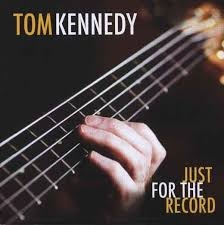
Daily Dose Of Jazz…
Tom Kennedy was born on August 21, 1960 in St. Louis, Missouri and is the son of a professional trumpet player. He began playing acoustic bass at the age of nine on a double-bass brought home by his older brother, jazz pianist Ray Kennedy. It wasn’t long before he began to perform with such as Freddie Hubbard, James Moody, Nat Adderly, Sonny Stitt and Stan Kenton passing through the Midwest.
Specializing in acoustic jazz until he picked up the electric bass at the age of 17. Soon he was dividing his time between mainstream and progressive jazz fusion. Tom gained a reputation beyond St. Louis and he relocated to New York City, where he quickly found work with multiple groups. He recorded with guitarist Bill Connors and toured with Michael Brecker in the jazz-fusion group Steps Ahead. He went on to have tours and recordings with Tania Maria and Al DiMeola.
In 1998, Kennedy became an integral part of Dave Weckl’s band, a group he toured, composed and recorded with for over nine years. They have continued to perform and record together on various projects for other artists, including Mike Stern, Didier Lockwood, Dave Grusin and Lee Ritenour.
He has recorded six albums as a leader and another twenty as a sideman with Dave Weckl, Bill Connors, Don Grolnick, Ray Kennedy, Al DiMeola, Planet X, Derek Sherinian, and Mike Stern.
Tom has also performed and recorded with top contemporary players Simon Phillips, Steve Gadd, Frank Gambale, Steve Lukather, David Sanborn, Jeff Lorber, Ricky Lawson, Joe Sample, Renee Rosnes and George Garzone and fusion band Planet X.
Double-bass and electric bassist Tom Kennedy, who moved to New York City in 1984 and immersed himself in the hard bop, fusion and swing genres, continues to perform and record.
More Posts: bandleader,bass,history,instrumental,jazz,music
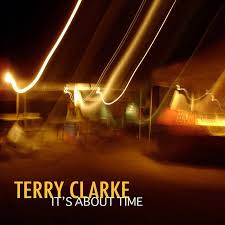
Daily Dose Of Jazz…
Terence Michael “Terry” Clarke was born August 20, 1944 in Vancouver, Canada. He studied percussion with Jim Blackley and played with Chris Gage and Dave Robbins early in his career. From 1965 to 1967 he toured in a quintet with John Handy, and joined The Fifth Dimension in 1967, remaining until 1969.
In 1970, he moved to Toronto, Canada where he began a longstanding association with Rob McConnell’s group, Boss Brass. He also played with Ed Bickert, Ruby Braff, Jim Galloway, Sonny Greenwich, Jay McShann, Emily Remler, and Frank Rosolino. In 1976, he toured with Jim Hall for the first time and in 1981 did an international tour with Oscar Peterson.
Relocating to New York City in 1985 he played or recorded with Toshiko Akiyoshi, Eddie Daniels, Oliver Jones, Roger Kellaway, Helen Merrill, Ken Peplowski, and Joe Roccisano, among others. He played with the Free Trade ensemble in 1994, a quintet composed of Clarke, Ralph Bowen, Neil Swainson, Renee Rosnes, and Peter Leitch.
Returning to Toronto in 1999, he joined The Rob McConnell Tentet. His 2009 debut album It’s About Time won a Juno Award for Traditional Jazz Album of the Year. Drummer Terry Clarke, who recorded 29 albums as a sideman and was appointed a Member of the Order of Canada in 2002, continues to perform and record.
More Posts: bandleader,drums,history,instrumental,jazz,music
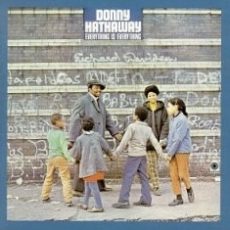
Daily Dose Of Jazz…
Ric Powell was born on August 19, 1942 in New Orleans, Louisiana. He attended and initially studied music at St. Augustine High School in New Orleans, before his family moved to the Bronx, New York where he went to Morris High School. Upon graduating he went on to study at New York School of Music in Manhattan, then in the U.S. Naval School of Music in Washington, D.C. and finally matriculated through Howard University in Washington, D.C.
He beganhis professional life as a member of the youth percussion ensemble Kalypso Kids, then became a member of the Apollo Theatre House Band under the direction of Ruben Philips. He toured with the Jimmy Castor Band before becoming a studio and freelance musician in New York City and Chicago, Illinois.
He formed a trio under his own name featuring Donny Hathaway, became a member of the CBS Staff Orchestra in Chicago, and then a record producer for Atlantic, Atco and Stax. Drummer Ric Powell, who formed Don-Ric Enterprises and is an Adjunct Professor of Percussion at Northwestern University, continues to perform.
More Posts: bandleader,drums,history,instrumental,jazz,music
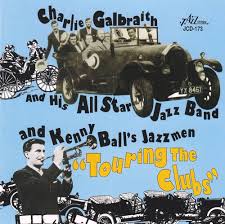
Daily Dose Of Jazz…
Charlie Galbraith was born August 13, 1920 in Lambeth, London, England. In the late 1940s he worked with the John Haim Jelly Roll Kings, Cy Laurie, Reg Rigden and Mike Daniels.
From 1949 to 1954 Charlie led his own group, Jazzmen and in late 1954 with Eric Silk, Bobby Mickleburg the following year, George Webb, Joe Daniels and Kenny Ball for two years beginning in 1957.
1960 saw Galbraith leading his own All Stars Jazz Band and in 1963 co-led with trumpeter Brian Jones. He later worked with Monty Sunshine and Joe Daniels through the end of the decade.
During the 1970s and Eighties he led his own band. Trombonist and singer Charlie Galbraith died January 16, 1997 in London, England.
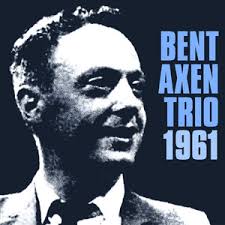
Daily Dose Of Jazz…
Bent Axen was born on August 12, 1925 in Copenhagen, Denmark.
Axen played for a year with Ib Renard in 1949 and in 1950 became a member of the Johnny Campbell and Max Brüel bands until 1958. He then moved on to work in Ib Glindemann’s orchestra. In 1960 he founded his own jazz quintet and also accompanied guest soloists such as Eric Dolphy in Erik Moseholm ‘s trio.
Between 1961 and 1967 he was a member of the radio jazz groups of Danmarks Radio, for which he also wrote compositions. He also performed with Don Byas. He went on to work as a theater musician and composer, first at Gladsaxe Teater and from 1971 at Folketeatret.
In 1960 he was honored as Danish “Jazz Musician of the Year”. Pianist, theatre and film composer Bent Axen, who released a half dozen albums as a leader, died on May 20, 2010.


